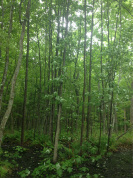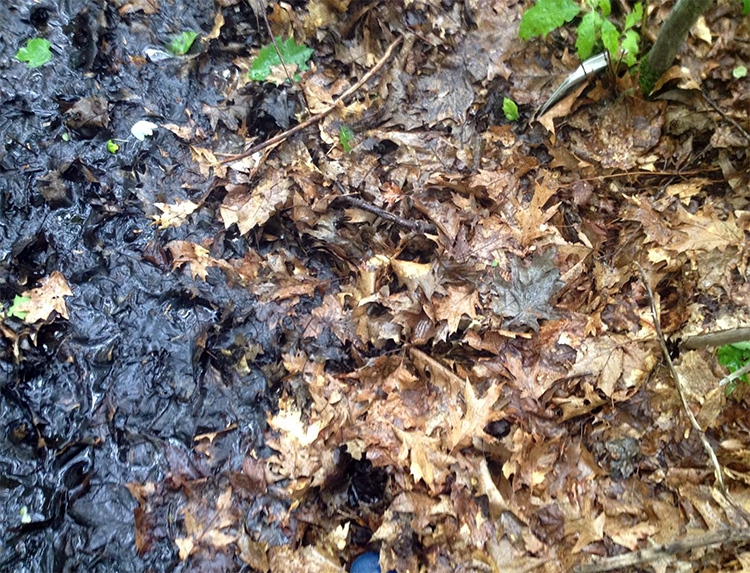Conor Gearin, Undergraduate Research Assistant, University of Maine-Orono
Maine’s forests in summer are a beautiful sight, both in the wilderness and near cities and towns. After the long winter, with only the pine trees for color, the deciduous trees—which lose their leaves every fall—quickly spread a brand-new canopy. However, taking a closer look at which kinds of leaves are in the canopy and on the forest floor can give you an idea of what is happening at the base of the ecosystem, helping understand chemical and biological processes controlling the rest of the food web.
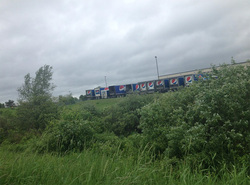 For example, let’s take a look at a vernal pool in Hampden, Maine. It is not a place you might expect to find important wildlife habitat. Large gray cargo planes roar overhead, descending to land at nearby Bangor International Airport. Trailer trucks shuffle to and from a Pepsi supply center.
For example, let’s take a look at a vernal pool in Hampden, Maine. It is not a place you might expect to find important wildlife habitat. Large gray cargo planes roar overhead, descending to land at nearby Bangor International Airport. Trailer trucks shuffle to and from a Pepsi supply center.
But a short distance from the Pepsi center’s fence, a tree-line hides beautiful, classic vernal pool, a crucial breeding ground for Maine’s frogs and salamanders. The pool fills in the spring, dries by the end of summer, and refills in the fall.
If you look at the canopy, you see only star-shaped maple leaves.
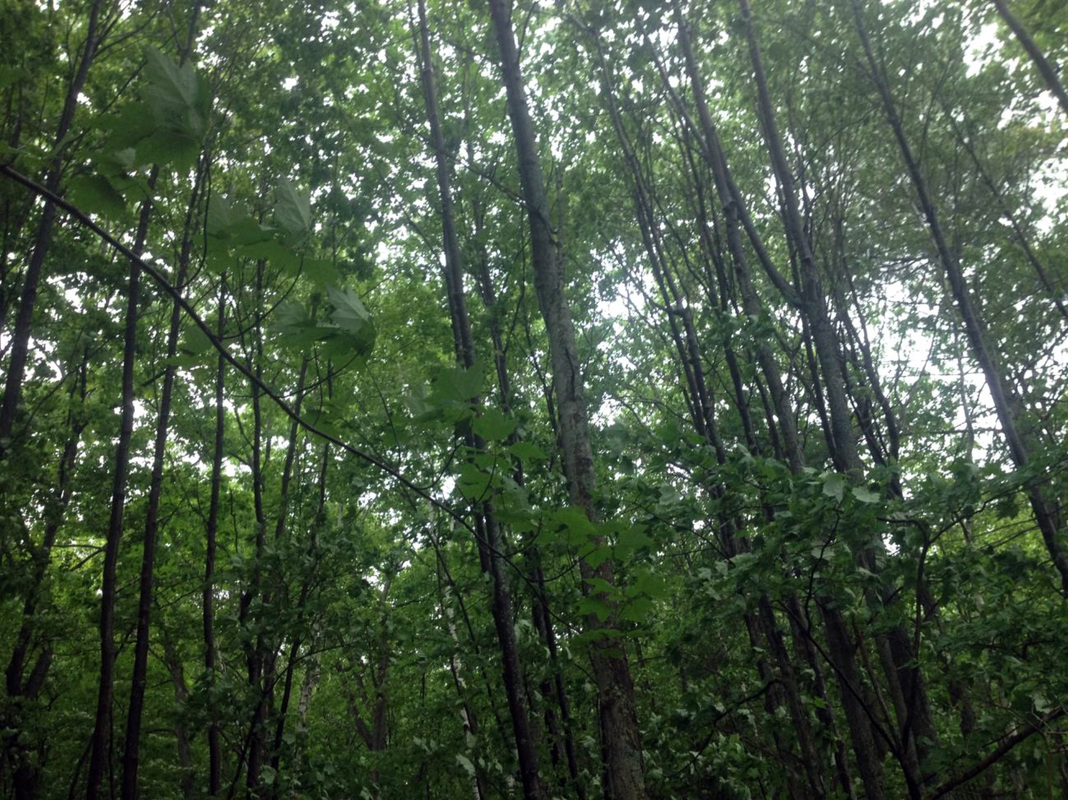
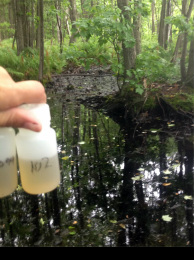 If almost all the trees above the pool are maples, why do we only find oak leaves on the forest floor?
If almost all the trees above the pool are maples, why do we only find oak leaves on the forest floor?
Ecologists have studied the ways in which leaves break down, or decompose, to find ways to explain this situation. The chemical makeup of leaves affects how quickly they decompose. Three chemicals are most important to know to understand decomposition—carbon, nitrogen, and phosphorus. Each is a nutrient that plants need to grow, and the breakdown of dead leaves by microbes and fungi controls how the nutrient cycles back through the ecosystem.
Trying to figure out which of these chemicals is most important for decomposition rates, ecologists analyzed leaves and tested to see if the nitrogen content (N), the ratio of carbon to nitrogen (C:N), or the ratio of carbon to phosphorus (C:P) had the strongest effect on how quickly fungus and bacteria can break the leaves down. Over the years, they have found that leaves with relatively higher C:N and C:P ratios decayed more slowly than leaves with lower C:N and C:P ratios. This suggests that leaves with more N and P might be more easily broken down and more nutritious.
How does this relate to the abundance of oak leaves we see in the vernal pool when we only see maple trees above the pool? Trees need their leaves for photosynthesis and do not want too many of them eaten by plant-eating animals like caterpillars and other insects. Oaks use lots of carbon in their leaves, in order to protect the rarer nutrients, nitrogen and phosphorus, that their roots take in from the soil increasing their C:N and C:P ratios. In other words, because oak leaves have large amounts of molecules that are difficult to break down, they decompose slower than maple leaves.
These differences cause what we see at this vernal pool. Microbes and fungi have quickly broken down the maple leaves, returning the leaves’ nitrogen and phosphorus to the ecosystem. But oak leaves that have blown into the pool from a little further away stick around long after they have died because of their stronger chemical defenses. Microorganisms have to work harder to get at the oak leaves’ nutrients, which are still protected by higher amounts of plant fiber and the waxy cuticle—both of which are largely made up of carbon.
As microbes eat away at the leaves, the organic (carbon-containing) matter passes into the water. Just like a teabag or coffee beans turn water yellow or brown in a mug, the leaves’ organic chemicals are leaching into the water, turning it a yellowish color, as shown in water samples taken this summer.
This is important to know, because higher levels of organic matter can increase the amount of available food to small organisms like plankton in the water, ultimately increasing the quality of the habitat for frog and salamander tadpoles. With more small organisms, there is more food for developing tadpoles and salamanders.
The health of the rest of the ecosystem depends on nutrient levels in the soil, which plants need to survive. The green canopy of summer leaves around Maine’s vernal pools in suburban areas is not just scenic—it can give you a picture of the fundamental chemistry of an ecosystem.
Recommended Reading
For a good overview and illustrations of decomposition in forests and its importance, see a page written by Alan Watson Featherstone, a Scottish conservationist.
Bibliography
Gosz, J.R., Likens, G.E., and Bormann, H.F. 1973. Nutrient Release From Decomposing Leaf and Branch Litter in the Hubbard Brook Forest, New Hampshire. Ecological Monographs 43, No. 2: 173-191. <http://www.jstor.org/stable/1942193>
Schlesinger, W.H. 1997. Biogeochemistry. 2nd ed. Academic Press.
Suberkropp, K., Godshalk, G.L., and Klug, M.J. 1976. Changes in the Chemical Composition of Leaves During Processing in a Woodland Stream. Ecology 57, No. 4: 720-727.
<http://www.jstor.org/stable/1936185>
Witkamp, M. 1966. Decomposition of Leaf Litter in Relation to Environment, Microflora, and Microbial Respiration. Ecology 47, No. 2: 194-201.
<http://www.jstor.org/stable/1933765>

